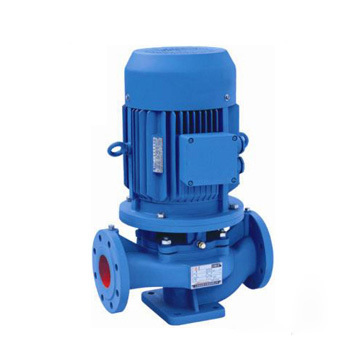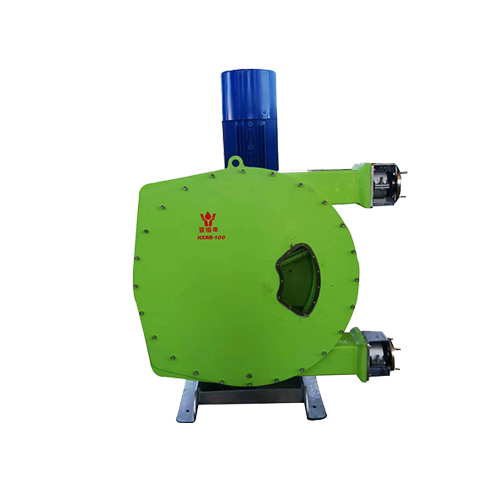The Essential Guide to ISG Pipeline Pump Maintenance: Maximize Efficiency and Longevity
Jun 23,2025

The Essential Guide to ISG Pipeline Pump Maintenance
Understanding ISG Pipeline Pumps
ISG pipeline pumps are vital components in various industrial applications, known for their efficiency and reliability in transporting fluids. These pumps are designed to operate under diverse conditions and require meticulous maintenance to ensure optimal performance. In this guide, we will explore the essential aspects of ISG pipeline pump maintenance, including its components, maintenance best practices, and troubleshooting methods.
Importance of Routine Maintenance for ISG Pipeline Pumps
Implementing a regular maintenance schedule for ISG pipeline pumps is crucial for several reasons:
- Increases Lifespan: Regular maintenance significantly extends the operational life of pumps, reducing the need for premature replacements.
- Enhances Efficiency: Well-maintained pumps operate more efficiently, leading to lower energy costs and improved fluid transmission.
- Minimizes Downtime: Proactive maintenance helps in identifying potential issues before they lead to breakdowns, ensuring continuous operation.
- Improves Safety: Regular checks can identify hazardous conditions, thus enhancing safety in the workplace.
Key Components of ISG Pipeline Pumps
1. Pump Casing
The pump casing houses the internal components and is crucial for maintaining the structural integrity of the pump. Regular inspection for cracks or corrosion is essential.
2. Impeller
The impeller is responsible for moving the fluid. Its performance directly affects the pump's efficiency. Wear and tear on the impeller can lead to decreased performance.
3. Shaft
The shaft transmits energy from the motor to the impeller. It must be properly aligned and lubricated to avoid excessive wear.
4. Bearings
Bearings support the rotating shaft and reduce friction. They require regular lubrication and should be checked for signs of wear.
5. Mechanical Seal
The mechanical seal prevents fluid leakage. Any signs of leakage should be addressed immediately to avoid further damage.
Best Practices for ISG Pipeline Pump Maintenance
1. Establish a Maintenance Schedule
Implementing a structured maintenance schedule tailored to your operational needs ensures that all components are routinely inspected and serviced, thus avoiding unnecessary issues.
2. Regular Cleaning and Inspection
Keeping the pump and its surroundings clean is essential. Dust and debris can hinder performance. Inspect for signs of wear, leaks, and corrosion regularly.
3. Lubrication of Moving Parts
Proper lubrication of bearings and the shaft is critical. Use the manufacturer’s recommended lubricants to ensure optimal operation and prevent overheating.
4. Monitor Vibration Levels
Vibration analysis can help identify misalignment or imbalance in the pump system. Regular monitoring allows for timely corrective actions.
5. Temperature Monitoring
Monitoring the operating temperature of the pump can prevent overheating. If the temperature exceeds normal levels, investigate potential causes.
Troubleshooting Common Issues with ISG Pipeline Pumps
1. Low Flow Rate
If the pump is delivering less fluid than expected, check for blockages in the system, inspect the impeller for damage, and ensure that the pump is primed correctly.
2. Excessive Noise or Vibration
Unusual noises can indicate misalignment or worn bearings. Conduct a thorough inspection to identify the source and resolve it promptly.
3. Leakage Around Seals
Leakage may indicate a failing mechanical seal. Determine the cause of the leak and replace the seal if necessary to prevent further fluid loss.
4. Overheating
Overheating can result from inadequate lubrication or excessive load. Check the lubrication levels and ensure the pump is operating within its designed capacity.
Tips for Maximizing the Lifespan of ISG Pipeline Pumps
1. Invest in Quality Components
Using high-quality replacement parts ensures that the pump functions optimally and reduces the frequency of repairs or replacements.
2. Train Personnel
Regular training for operators on proper pump operation and maintenance procedures can significantly enhance the effectiveness of maintenance strategies.
3. Maintain Records
Keeping detailed maintenance records helps track the history of repairs and services, allowing for better planning and monitoring of pump performance.
When to Consult a Professional
While routine maintenance can often be handled in-house, certain situations warrant professional assistance:
- Complex Repairs: If the issue is beyond basic troubleshooting, consult a professional for repairs.
- Performance Issues: Persistent performance problems may need a specialist's expertise to diagnose accurately.
- System Upgrades: Consider professional help when implementing significant upgrades or modifications to the pumping system.
Frequently Asked Questions (FAQs)
1. How often should I perform maintenance on my ISG pipeline pump?
It's advisable to conduct maintenance checks at least every three months, although this may vary based on usage and environmental conditions.
2. What are the signs that my pump needs maintenance?
Signs include unusual noises, reduced flow rate, overheating, and visible leaks. Regular inspections can help identify these issues early.
3. Can I perform maintenance myself, or should I hire a professional?
Basic maintenance can often be performed in-house; however, complex repairs and troubleshooting should be handled by trained professionals.
4. What should I do if my pump overheats?
If your pump overheats, stop operation immediately, check lubrication levels, and assess load conditions. If issues persist, seek professional assistance.
5. Where can I find replacement parts for ISG pipeline pumps?
Replacement parts can be sourced from the manufacturer or authorized distributors. Ensure you use parts that meet quality standards for your pump model.
Conclusion
Maintaining an ISG pipeline pump is essential for ensuring optimal performance and longevity. By implementing a structured maintenance routine, understanding key components, and knowing how to troubleshoot common issues, you can maximize the efficiency of your pump systems. Regular checks, professional training, and attention to detail can make a significant difference in the effective operation of your industrial equipment. By following the guidelines outlined in this essential guide, you can enhance the reliability and lifespan of your ISG pipeline pumps, ensuring they meet the demands of your operations.
PREVIOUS:
Contact Us
E-mail :
sales@yaquanpump.com
service@yaquanpump.com
Phone/WhatsApp:
+44 7301702546
+63 9452052801
Address:
Room B208, Building 2, North Hongqiao Songri Center, No.215 Gaochao Road, Jiading District, Shanghai









